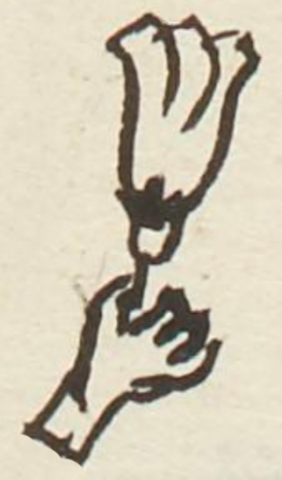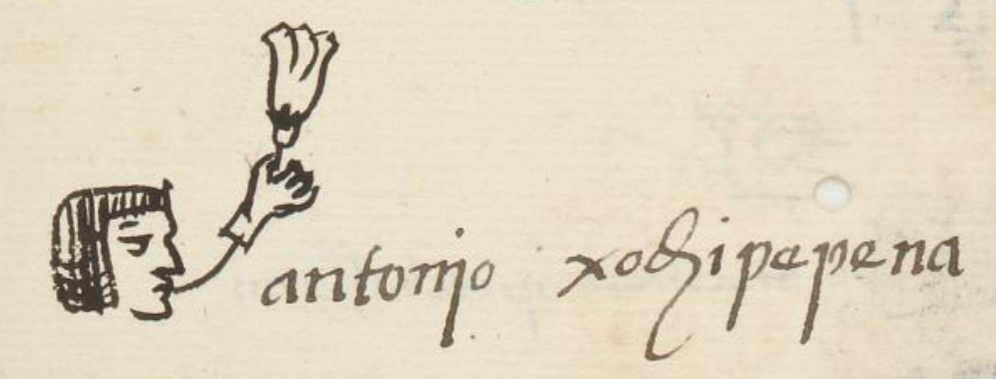Xochipepena (MH489r)
This black-line drawing of the compound glyph for the personal name Xochipepena ("He Chooses Flowers" or "He Harvests Flowers") is attested here as a man's name. It shows a flower (xochitl) with three visible petals. Below this, a (right) hand is picking (choosing or gathering, pepena) the flower at its sepal.
Stephanie Wood
Pehpena (here showing the glottal stop) was used in many cases to refer to a kind of labor, a harvesting. Frances Karttunen notes how the term is combined with many "harvestable" or "collectable" items, such as firewood, maize, and tomatoes (see our Online Nahuatl Dictionary). If flowers were a required item for harvesting, that says something interesting about the culture. The term pehpena also applies to elections (choosing a leader). See our dictionary for examples of the term's usage.
Stephanie Wood
antonio xochipepena
Antonio Xochipepena
Stephanie Wood
1560
Stephanie Wood
flowers, flores, choose, escoger

xochi(tl), flower, https://nahuatl.wired-humanities.org/content/xochitl
pepena, to choose or pick, https://nahuatl.wired-humanities.org/content/pepena
Escoge Flores, o Cosecha Flores
Stephanie Wood
Matrícula de Huexotzinco, folio 489r, World Digital Library. https://www.loc.gov/resource/gdcwdl.wdl_15282/?sp=57&st=image
This manuscript is hosted by the Library of Congress and the World Digital Library; used here with the Creative Commons, “Attribution-NonCommercial-ShareAlike 3.0 License” (CC-BY-NC-SAq 3.0).







